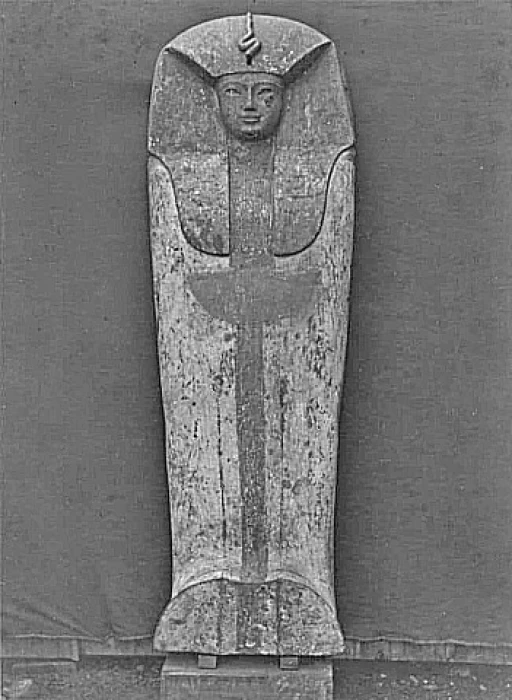
Seqenenre | Theban Pharaoh
Seqenenre | Theban Pharaoh
On this day, nearly three and a half millennium ago, the Egyptian king Sakhnen Ra who bore the epithet 'The Brave One' was killed in some brutal manner. He may have been apprehended in his sleep or perhaps fought and died on a battlefield aged 40 trying to free Egypt from the Hyksos 1555 BCE.
The rulers of Egypt in the Seventeenth Dynasty, under the leadership of the southern king Sakhnen Ra Ta'a II, began to resist the Hyksos occupation, especially since only a narrow strip of independent Egypt remained in Upper Egypt, which enjoyed a kind of autonomy under the control of the rulers of the ancient city of Thebes, extending from Qusiya in Assiut (the last Hyksos border in the south) to the Elephantine region in Aswan.
The rulers of Thebes began to feel powerful, and they began to ally with their neighbors, the princes of Egypt in the north and south, and wrote their names in cartridges preceded by royal titles to spite the Hyksos and to express their Egyptian self in the face of the brutal occupier.
One Egyptian papyrus shows us the beginning of the conflict and friction between the rulers of Thebes and the Hyksos, a story that tends to have a mythical atmosphere and illustrates the story of the clash between the ruler of Thebes, Saqnen Ra Ta'a II, and the Hyksos king Abibi or Apophis in the first battles and wars to liberate Egypt from the plight of the abominable Hyksos occupation.
This story shows the Hyksos king Apophis trying to find an excuse to clash with the ruler of Thebes, Sakhnen Ra, so he sends him a strange letter complaining about the sounds of hippos swimming in the sacred lake in the temple of the god Amun in Thebes, which disturb the Hyksos king and prevent him from sleeping in his distant capital, Oaris. The heroic King Sakhnin-Ra responded with a clever reply showing his desire for peace, and honored the Hyksos delegation after being advised to do so by his courtiers.
Last year 2021, new and important details about King Sakhnen Ra were announced, with CT scans conducted by Dr. Zahi Hawass, archaeologist, and Dr. Sahar Selim, professor of radiology at the Faculty of Medicine at Cairo University, where modern medical technology helped tell the story of an ancient Egyptian king who died for the reunification of Egypt in the 16th century BC, in research published today, February 17, in the journal Frontiers in Medicine. CT scans of the mummy of King Sakhnen Ra revealed that he had suffered blows to the head and face and sustained fatal injuries.
Latest Articles
Admin
Aswan Governerate in Egypt
One of Egypt's southern governorates is Aswan Governorate. The city of Aswan serves as its capital. At a latitude of 22 north of the equator (also known as the Tropic of Cancer), it is bounded to the north by the Qena Governorate, to the east by the Red Sea Governorate, to the west by the New Valley Governorate, and to the south by the Republic of Sudan.
Admin
Luxor Governorate Egypt
The capital of the Arab Republic of Egypt is Luxor City, which was once known as "Thebes City" because it served as Egypt's capital during the Pharaonic era. It is situated in the South Upper Egypt region, approximately 670 kilometers from the capital Cairo from the south. It is bordered on the north by Qena Governorate, on the south by Aswan Governorate, on the east by Red Sea Governorate, and on the west by New Valley Governorate.
Admin
History of kafr El Sheikh Governorate
Kafr El Sheikh Governorate is an Egyptian governorate, located in the northernmost part of Egypt in the Nile Delta, with Kafr El Sheikh as its capital. It had a population of 3,172,753 in 2015 and an area of 3,748 km². Its entire area is located north of the delta and overlooks the Mediterranean Sea. The main economic activity of the residents of the governorate is agriculture and fishing, especially the southern lands of the governorate and the lands overlooking the Nile River - Rosetta Branch.
Admin
Egypt's New Administrative Capital
The New Administrative Capital is located between the Cairo-Suez and Cairo-Ain Sokhna roads, 60 km from Cairo and the same distance from Ain Sokhna and Suez. The New Administrative Capital is located on the border of Badr City, in the area between the Cairo-Suez and Cairo-Ain Sokhna roads, just after New Cairo, Mostakbal City and Madinaty.
Admin
Al Gharbia Governorate
Gharbia Governorate is one of the governorates full of archaeological sites, whether they are places or facilities (mosques, churches), as the governorate is a destination for visitors to these places throughout the year, whether they are Egyptians from the different governorates.
Admin
Hamata Islands (Qulaan Archipelago) in Marsa Alam
The Hamata area, south of Marsa Alam in the Red Sea, is one of the most important parts of the Wadi El Gemal Reserve, whether in the desert or the sea. It was named after the sorrel plant, which was distorted to Hamata.













